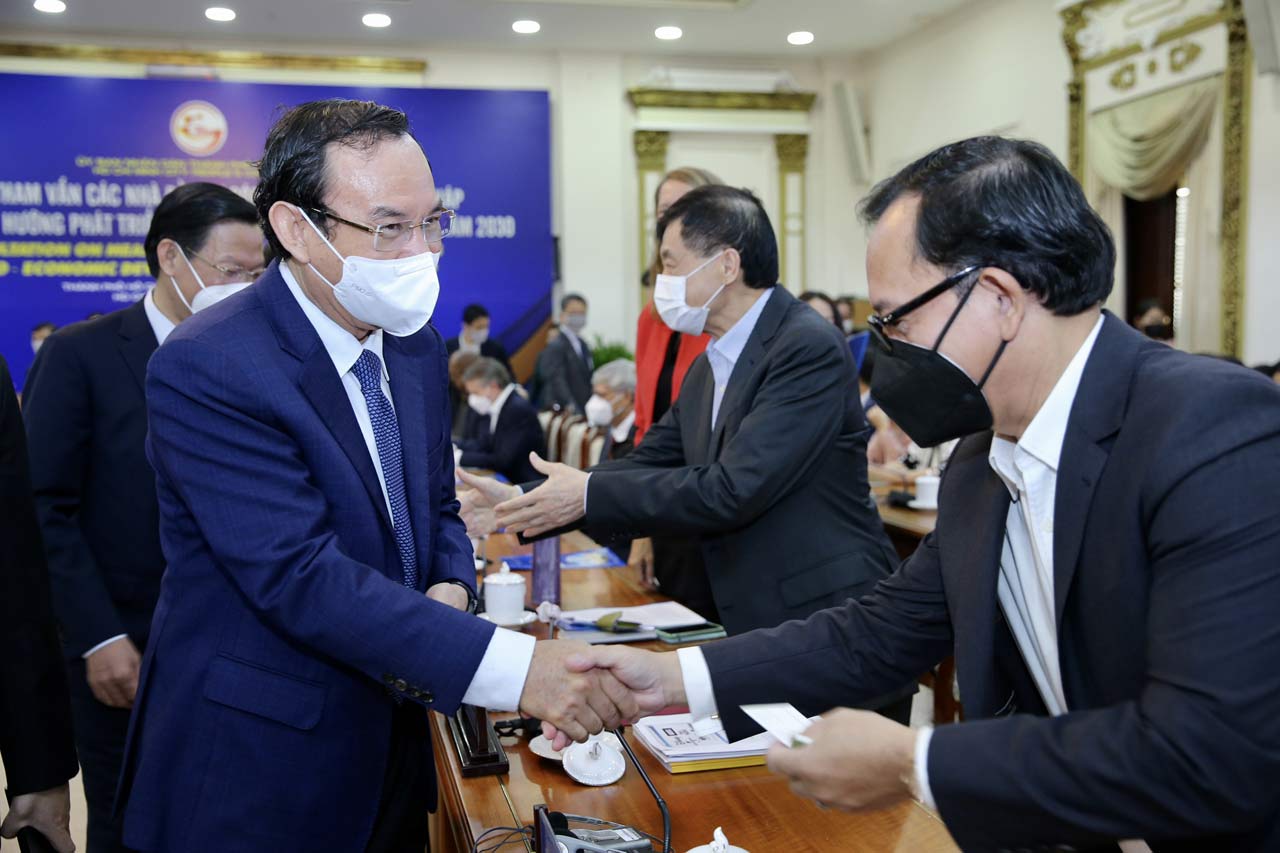HCMC – Many large investors have made suggestions for HCMC’s socioeconomic development until 2030, mainly infrastructure development.
The HCMC government yesterday, March 22, held a conference for proposals and solutions from investors for the city’s socioeconomic development until 2030 with the participation of over 300 enterprises, the local media reported.
Speaking at the conference, HCMC Chairman Phan Van Mai said the municipal Party Committee had considered specific tasks to improve the investment environment and support enterprises to overcome difficulties and recover production and business. The city has also set a target to effectively conduct missions this year: safely and flexibly adapting to and effectively controlling Covid-19, improving the quality of urban governance, improving the local investment environment and supporting enterprises.
Therefore, the city sought to listen to the expectations and demands of enterprises and their proposals, Mai said.
Nguyen Thi Phuong Thao, chairman of Sovico Group, suggested boosting the development of the stock market to 100%-200% of the country’s gross domestic product. She also proposed developing air transport, the digital economy, the private economic sector, the startup movement and infrastructure to create conditions for other sectors.
HCMC should be developed as an international tourist destination and innovations should be enhanced. In June, Sovico will open an innovation center which is expected to become a destination for startups, she said.
Thao added Sovico was willing to accompany the city during the development process.
With an expectation that the city will quickly reach growth targets, many international enterprises have paid much attention to the infrastructure development in HCMC, especially seaports.
Park Hyun Bae, general director of KCTC Vietnam Co., Ltd, said the city should continue upgrading and expanding cargo terminals, especially the Cat Lai Port in Thu Duc City and the Hiep Phuoc Port in District 7, and supporting enterprises to improve logistics services.
Moreover, Vietnam should apply technology and connect the information systems of seaports to regulate vehicles and cargo, reducing congestion.
According to Boris Cohen, CEO of MSC Vietnam, the development of infrastructure at seaports will help HCMC become a cargo service center in Vietnam and the region.
He expected the Cat Lai Port to be modernized. He also proposed the city build a new transit port in Can Gio before 2030 instead of after 2030 to take advantage of the strong development of the maritime economy.
At the conference, foreign investors also suggested developing HCMC into a high-quality consumer goods distribution center by developing a modern retail network to meet the demands of urban dwellers.
A representative of KZN Company said the city should invest in industrial infrastructure to attract and develop small and medium enterprises, which account for a large number of enterprises in the processing, manufacturing and supporting industries producing key and potential products of the city.
Speaking at the conference, director of the municipal Department of Planning and Investment Le Thi Huynh Mai said this year, the city would shift from fighting the Covid-19 pandemic to the socioeconomic recovery and development.
The city has proposed 11 issues to the central Government, including the Ring Road No. 3 project, the increase of the mid-term public investment for the city, the development of the city into an international financial center and special policies for Thu Duc City.
Mai said the city had been facing multiple difficulties, such as the proportion of traffic land of 8%, much lower than the average of 21%-26% of other cities in the world. The traffic infrastructure development has failed to keep pace with urbanization and population growth.
HCMC also sought to become a modern industry and service city and a leading city in the digital economy, with the gross regional domestic product (GRDP) reaching US$13,000 and the digital economy making up 40% of the city’s GRDP by 2030.
To reach the targets, the city will focus on four breakthrough programs, including governance, infrastructure, human resources and culture, and key programs on enterprise and innovative startup development.
The city will also review the public land fund and draw up auction plans to raise the city’s budget revenue and selectively attract foreign investment projects, prioritizing tech groups with a strong financial capacity, advanced technology and strength in research and development.











